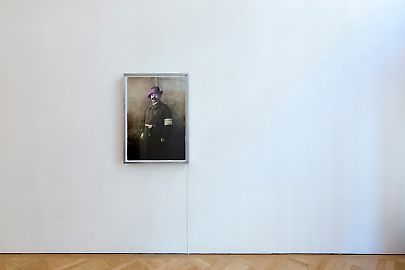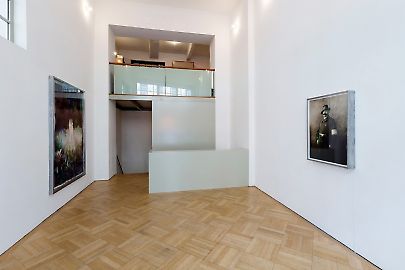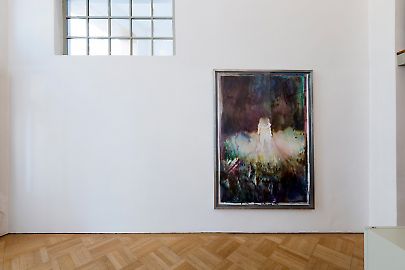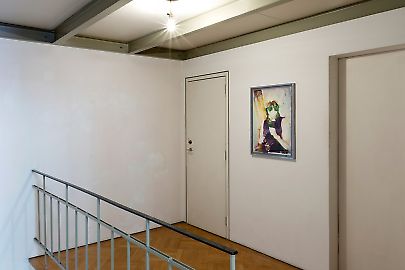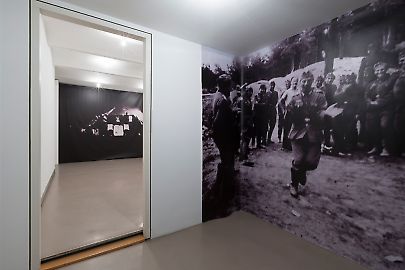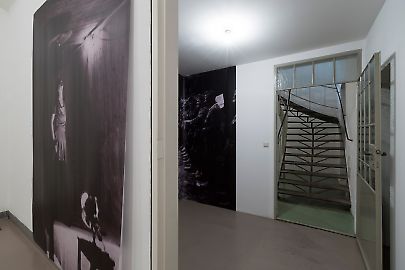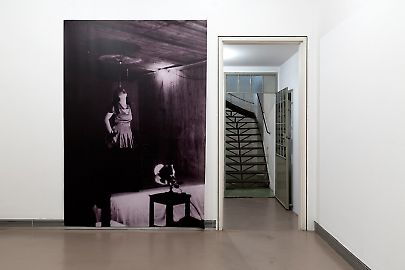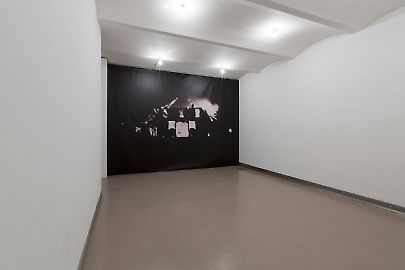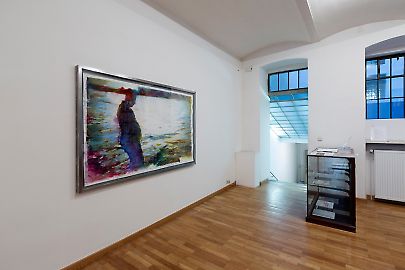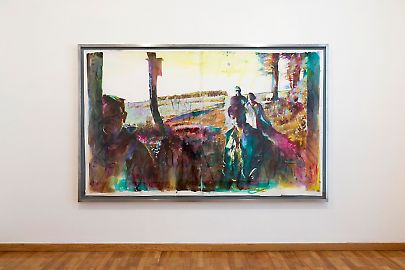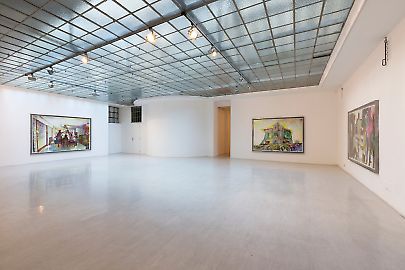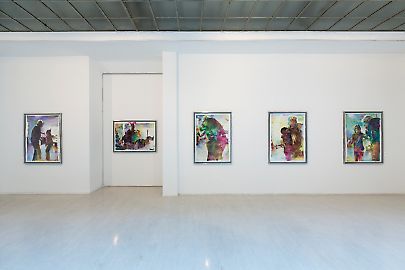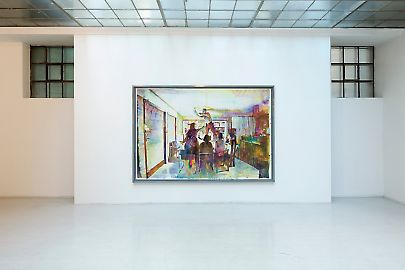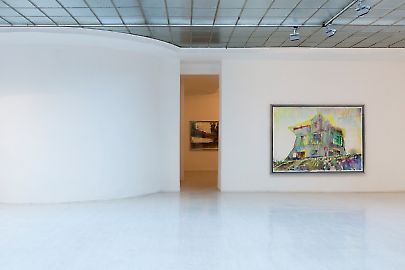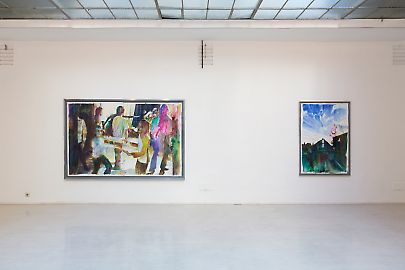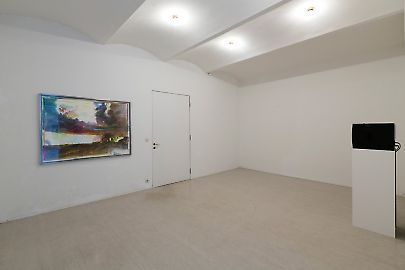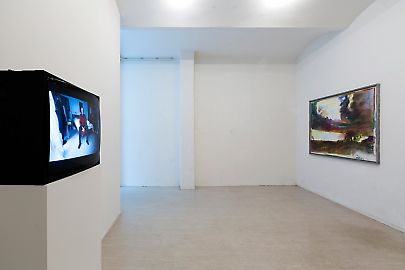Martin Dammann -- Blind Spot
In psychology, the term blind spot is used to refer to those realms of memory that are repressed so that we are no longer aware of them. By way of this mechanism, actions and experiences are eliminated from our consciousness for various reasons. The works in this exhibition by Martin Dammann also deal with the past and our memory. Familiar from earlier presentations of the artist’s work, watercolors based on archival photographs of wartime situations are now opposed to paintings based on personal photographs from his private life. Exploring public and private memory, Martin Dammann stages a dramaturgy of archival and current photographs, his painterly execution of these photographs in watercolors, and a video work. This combination enables a direct comparison of what was then and what is now through analogies between what is depicted and the composition.
Martin Dammann’s fascination with the past is expressed in the exploration of how the irrevocable events of the two world wars continue to have an impact on current value systems in our society. By translating these old photographs to painting, he creates a link between the past and today. By adding private, current photographic material, the artist contrasts our images of the past with those that we create of ourselves. This seems entirely convincing, especially considering that an exploration of the impact of the two world wars on today’s society leads to a study of the influence of the family structure on the individual.
By transforming his motifs to large format paintings, Martin Dammann focuses on emotions that he discovers in a photograph and applies them with intense hues in his watercolors. In general, the objects in the images are alienated by the choice of the watercolor technique, and only certain components of the image become recognizable. The blurred character of the watercolors can allow for less clarity, both in the process of painting and in their interpretation. Sometimes he leaves out faces or entire bodies that either remain white or are transformed into unicolor surfaces. It seems almost as if his paintings emblematize the human, fragmented form of memory. Elements of what we experience do not even reach our memory, while others can only be summoned as blurry images, and some things remain very precise and clear. In its entirety, it is as incidental as the process that takes place when painting with watercolors on paper.
Frequent subjects in Dammann’s work consist of a manifold constellation of group structures. The focus of the current exhibition at Georg Kargl Fine Arts lies on a very intimate structure: the family. By way of the video work in the last room of the exhibition, which is very private in character, an engagement with a global, collective past begins to mix with an interest in a very personal past. We see the artist’s father, who responds to a question about the family’s past with a mere laugh, unable to call anything specific to mind: a blind spot in memory.
Text: Marie Duhnkrack
Translation: Brian Currid, zweisprachkunst.de


